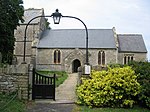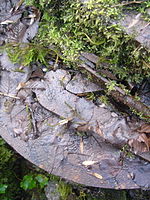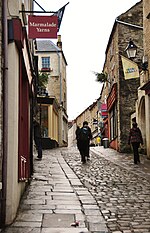Vallis Vale
Geology of SomersetSites of Special Scientific Interest in SomersetSites of Special Scientific Interest notified in 1952Somerset geography stubsUnconformities

Vallis Vale (grid reference ST755490) is a 23.9 hectare biological and geological Site of Special Scientific Interest near Great Elm in Somerset, notified in 1952. Vallis Vale is an ancient woodland site and supports an Ash-Wych Elm stand type with a restricted distribution in Britain. Vallis Vale exposes some of Britain's most classic rock outcrops, exhibiting several of the most easily demonstrated examples of angular unconformity available. A nationally important research and educational locality, of great renown for the part it has played in the historical development of geological science.
Excerpt from the Wikipedia article Vallis Vale (License: CC BY-SA 3.0, Authors, Images).Vallis Vale
Elm Lane,
Geographical coordinates (GPS) Address Nearby Places Show on map
Geographical coordinates (GPS)
| Latitude | Longitude |
|---|---|
| N 51.23965 ° | E -2.35234 ° |
Address
Elm Lane
Elm Lane
BA11 3JA , Great Elm
England, United Kingdom
Open on Google Maps










